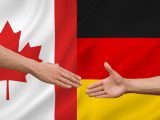
Unveiling the Mysteries of White Hydrogen: The Ultimate Guide
August 20, 2022Naturally occurring hydrogen is a form of geological chemical element found in the air and in underground deposits.
White hydrogen is the natural form of H2 that is found in underground deposits released via fracking, and in the air. It is the lightest chemical element and the first on the periodical table of elements.
That said, even though it is naturally occurring, there are not many that plan on using for energy.
Even though white hydrogen is the most abundant element in the universe, it is rare in its pure form, which is why it isn’t being considered for collection to be used as an emission-free fuel. Instead, H2 is usually combined with other atoms to create other molecules. For example, an easily recognizable combination is H2O, better known as water. Natural white H2 differs from forms used for fuel such as green which is produced using processes powered by renewable energy or red hydrogen which is made using nuclear power. While the natural form may be renewable and is just as non-polluting as those forms made with renewable energy, it cannot be reasonably captured without other processes to extract it from where it has been combined.
Natural white H2 differs from forms used for fuel such as green which is produced using processes powered by renewable energy or red hydrogen which is made using nuclear power. While the natural form may be renewable and is just as non-polluting as those forms made with renewable energy, it cannot be reasonably captured without other processes to extract it from where it has been combined.

White hydrogen found on the earth is produced by a range of different sources.
Among the sources of natural H2 are:
- Serpentinization, a reaction between ultrabasic rocks and water
- Degassing H2 found deep within the Earth’s crust and mantle
- Weathering, in which water interacts with freshly exposed rock surfaces
- A contact between water and reducing agents located in the Earth’s mantle
- Organic matter decomposition
- Hydroxyl ion decomposition in the structure of minerals
- Natural water radiolysis
- Biological activity
Though natural hydrogen is just as usable and greenhouse gas emission-free as other forms of H2, extracting it is energy intensive and would require the use of heavy machinery and fossil fuels, defeating the purpose of obtaining it in the first place.
The company, Natural Hydrogen Energy, shows the potential and drilling for natural hydrogen –
There have been a number of underground white hydrogen deposits identified in reservoirs in locations such as France, Mali, the United States and over a dozen other countries. Unfortunately, they would all be challenging to access, and the potential of the reservoirs themselves would be challenging to assess in order to determine whether it would be worthwhile to make the effort.
Other white hydrogen sources include ocean floor emanations, but those would also be challenging to exploit, causing researchers to look to other sources such as water electrolysis.

FAQs About White Hydrogen and White Hydrogen Deposits
Q: What is white hydrogen? A: White hydrogen is a naturally occurring form of H2 found in underground deposits through processes like fracking and in the air. It is the lightest chemical element and is the most abundant element in the universe. Q: Why isn’t white hydrogen being widely used for energy? A: Although white hydrogen is abundant, it is rare in its pure form. It is often combined with other atoms to create different molecules, such as water (H2O). While white hydrogen is non-polluting and renewable, it cannot be easily captured without additional processes to extract it from where it has been combined.
Q: Why isn’t white hydrogen being widely used for energy? A: Although white hydrogen is abundant, it is rare in its pure form. It is often combined with other atoms to create different molecules, such as water (H2O). While white hydrogen is non-polluting and renewable, it cannot be easily captured without additional processes to extract it from where it has been combined.
Q: How is white hydrogen produced in nature? A: White hydrogen found on Earth is produced by various sources, including serpentinization (a reaction between ultrabasic rocks and water), degassing from deep within the Earth’s crust and mantle, weathering, contact between water and reducing agents in the Earth’s mantle, organic matter decomposition, hydroxyl ion decomposition in minerals, natural water radiolysis, and biological activity.
Q: Why is extracting white hydrogen challenging? A: Extracting white hydrogen is energy-intensive and requires the use of heavy machinery and fossil fuels, which contradicts the goal of obtaining it in an environmentally friendly manner.
Q: Are there any identified sources of white hydrogen deposits? A: There have been underground sources of white hydrogen identified in reservoirs in countries like France, Mali, the United States, and many others. However, accessing these reservoirs and evaluating their potential would present significant challenges.
Q: Are there alternative sources of white hydrogen? A: Researchers are exploring alternative sources, such as ocean floor emanations, but these also pose challenges. As a result, attention has turned to methods like water electrolysis as potential sources of white hydrogen.



 With over 15 years of reporting hydrogen news, we are your premier source for the latest updates and insights in hydrogen and renewable energy.
With over 15 years of reporting hydrogen news, we are your premier source for the latest updates and insights in hydrogen and renewable energy.
If they can reach oil in deep water rigs such as those in the gulf of Mexico that reach depths of 3 miles. I’m sure they can do the same with white hydrogen.
Sure initial costs will be high but it’s an investment and they will pass this cost onto the buyers until it reaches the point where the costs come down then the price will follow
The cost of drilling and extraction using fossil fuels would not exceed the vast quantities of gas that would likely be released. Once there was a busy and viable h2 mining industry, the drilling operations would be powered by H2…!!!
We have drilled a well and our mass spec has shown we are tapping into both white hydrogen and helium.